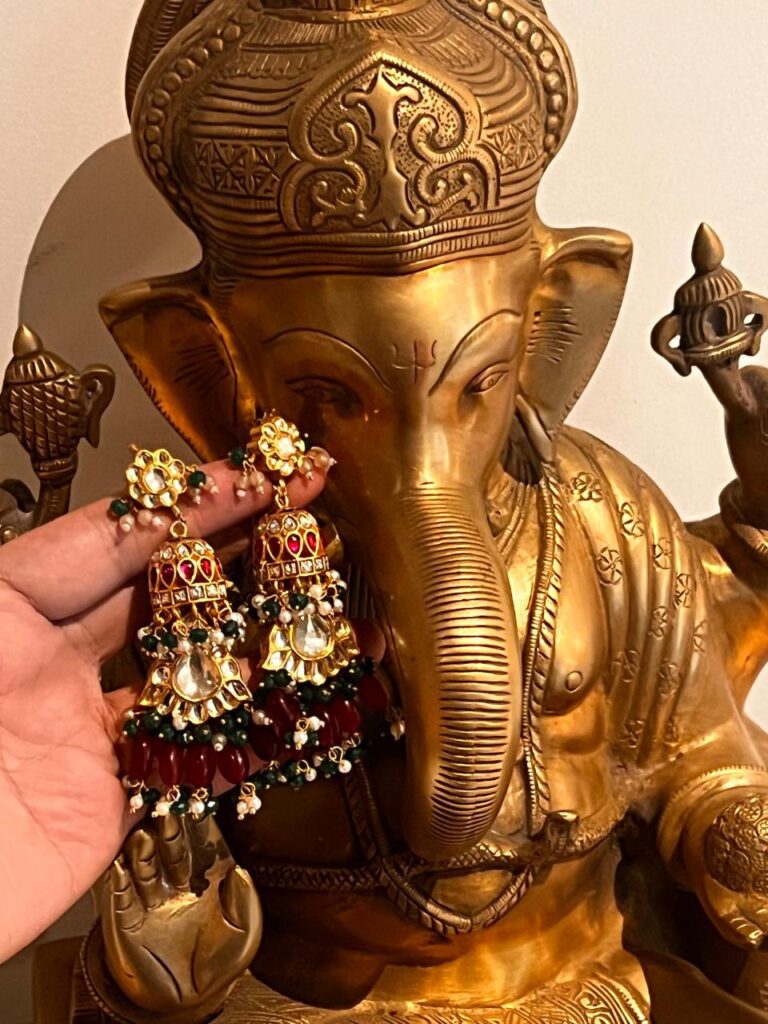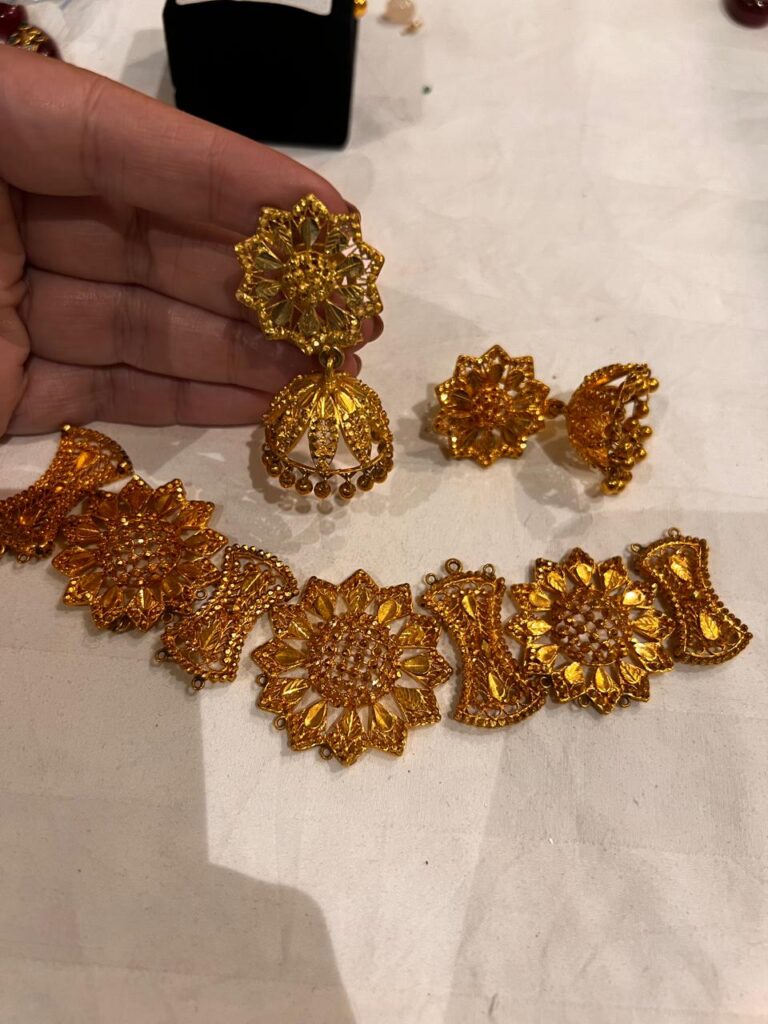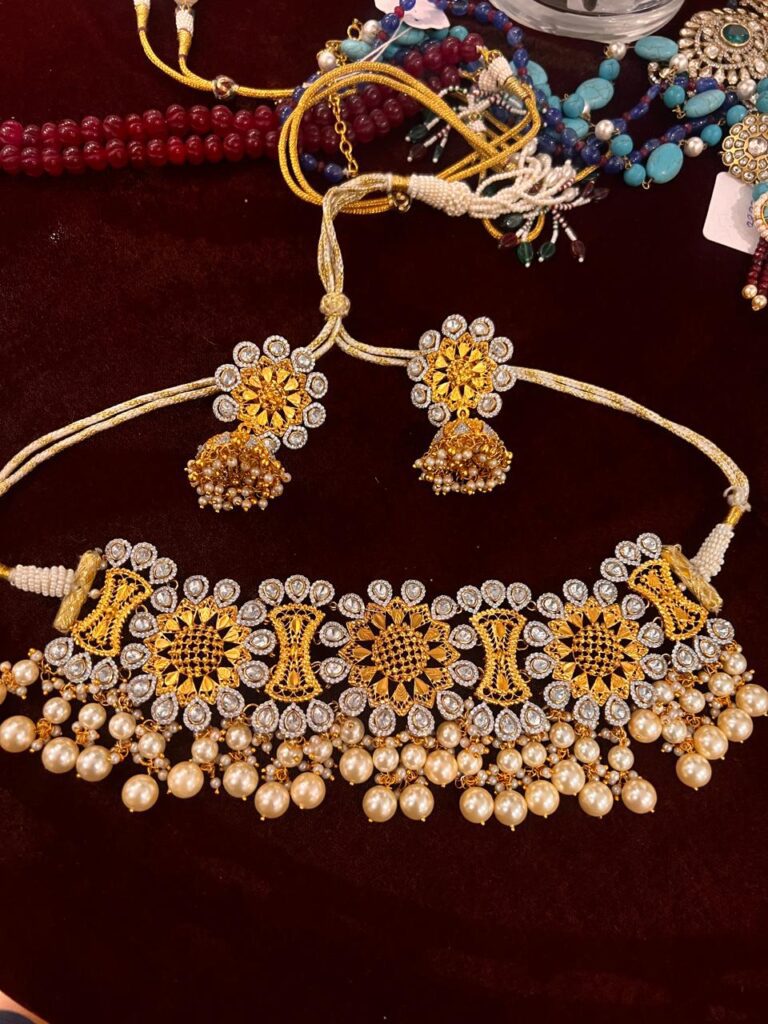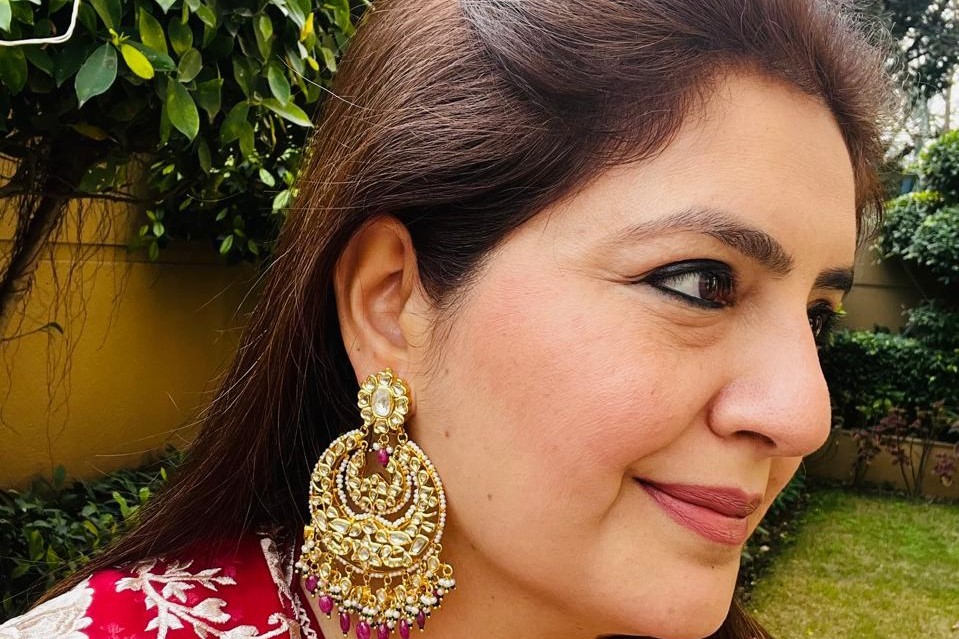Do you have cherished jewellery pieces that have lost their lustre or no longer suit your style? Imagine transforming them into stunning, contemporary masterpieces. Picture wearing your grandmother’s necklace with a modern twist or flaunting your mother’s old bracelet, revamped to match today’s trends. For many women in India, jewellery holds a special place in their hearts, often representing significant moments, relationships, and memories. This sentiment has sparked a growing trend to refurbish rather than replace old jewellery, allowing you to preserve its sentimental value while enhancing its beauty and relevance for today’s fashion. So, there is an increasing trend of opting for refurbished gold jewellery and heirloom pieces.
You may like:
- Age-Defying Beauty: How to Rock Bold Red Lips Over 50
- Do your bit for the environment. Add these 5 sustainable brands to your closet!
- Shapewear are wonder garments for older women
Jewellery refurbishment is a delicate art that breathes new life into cherished pieces, blending tradition with contemporary elegance. Each item, whether an heirloom or a treasured gift, carries stories and memories, making the process of refurbishment both sentimental and intricate. The transformation of these pieces involves more than just skill; it requires a deep appreciation for their history and a vision for their potential future.
Zevar and Zari by Reema is a trusted jewellery redesign service known for its aesthetic excellence and fine execution. They have refurbished gold jewellery and many other legacy pieces of clients into exotic contemporary designs. We are delighted to present an interview with its founder and designer, Reema Anand, who shares the meticulous process of transforming old, delicate jewellery into modern masterpieces while preserving its original charm and authenticity.
Join us as we uncover the meticulous process and innovative techniques of transforming old jewellery into gorgeous contemporary pieces.
In your experience, why do people choose to refurbish their old jewellery instead of buying new pieces?
Every piece of jewellery has a story. Whether it’s from a wedding, anniversary, birthday, or a gift from loved ones, these pieces hold sentimental value. Heirloom pieces, passed down through generations, are especially cherished. People don’t want to part with these legacy items, so we help bring out their beauty by adding new elements like extra silver or gold-based pieces, a few more strings, or by changing the polish slightly to enhance the overall look. However, the piece stays intact without losing its original character. So, our refurbished gold jewellery and other items continue to be relevant despite changing fashion trends.


Quick Summary
At Zevar and Zari by Reema, refurbishing jewellery involves handling delicate pieces with care and preserving their authenticity while modernizing them. Skilled craftsmen ensure quality by maintaining the original structure. The team stays updated with fashion trends to create contemporary designs. To maintain jewellery, clients are advised to keep it dry and store it properly. Memorable client transformations, like unrecognizable heirlooms, highlight the brand’s expertise. Zevar and Zari by Reema blends history with contemporary style.
Can you walk us through your typical process of refurbishing a piece of jewellery?
When a client brings in their pieces, we start with a thorough examination. We check for “kundas” and assess what can be done, whether it needs a polish change or can be converted into a choker, long necklace, or mid-length piece. We discuss if they want to add rubies, emeralds, pearls, rose quartz, etc. Once they finalize their choices, I provide an estimate. Then, we take the piece to the workshop for refurbishing, which includes changing the polish, adding “kundas”, revamping the “pirohis” and more. Finally, the piece is ready for the client. The makeover for refurbished gold jewellery or any other piece is quite a specialized task and requires a keen design sense along with a deep understanding of the techniques.



What are the most common types of jewellery you refurbish? Do you specialize in any particular styles or types of refurbishments?
The most common pieces I work on are old gold jewellery, “Kundan” jewellery, and small diamond or gold pendants. While I specialize in all these types, I particularly enjoy playing with colour by adding various stones, as I believe they add an extra oomph to the jewellery.
Have you noticed any trends in the types of refurbishments people are requesting?
Jewellery trends change like fashion. There is an increasing demand for refurbished gold jewellery. Clients always want the latest styles, which means staying updated with global trends in colour, patterns, and designs. The pieces I refurbish must align with the current trends to meet client expectations.
What are some of the biggest challenges you face in the refurbishing process? Are there any particular materials or designs that are easier or more challenging to work with?
Two main challenges arise during the refurbishing process. First, handling delicate and old pieces requires extra care to avoid damage. Second, maintaining the authenticity of the original piece while giving it a modern touch. We need to ensure the piece doesn’t lose its old charm or authenticity, yet your refurbished gold jewellery and other items become more versatile and in keeping with modern trends.



How do you ensure the quality and integrity of the original piece while giving it a fresh look?
Quality is paramount, and our craftsmen from Jaipur and Bengal have been in the jewellery business for three generations. We preserve the original piece by refraining from breaking, removing or melting anything. Instead, we add new elements to give it a fresh, modern look. This way, we maintain the authenticity of the piece. What’s remarkable is that your refurbished gold jewellery gets a new look without being melted or broken.
How do you stay updated with the latest trends and techniques in jewellery design and refurbishment?
Jewellery must be in sync with fashion trends. I stay updated by keeping an eye on clothing trends, whether modern or classic. Using CAD CAM, I design jewellery that complements various outfits, be it sarees, lehengas, gowns, or evening wear. A refurbished gold jewellery or any other item after a makeover becomes more versatile!
What tips do you have for maintaining refurbished jewellery to keep it looking fresh and new?
We advise clients to keep all types of jewellery—silver, gold, diamond, or” Kundan”—away from moisture, as it dulls the shine. Storing jewellery in a muslin cloth or a box lined with cloth helps maintain its gleam.


Can you share some memorable stories or experiences from your clients who have refurbished their jewellery?
There are many instances where our refurbished gold jewellery and revamped heirlooms have wowed our clients. But there is one instance that stands out. A client once brought me an old necklace to redesign. After I completed the redesign, I displayed it in the store. When she came to collect it, she was browsing through the displays and stopped in front of her own necklace, not recognizing it as hers. She asked me how much it cost and kept praising its beauty. I was both shocked and happy because we had made it so beautiful that she didn’t recognize her own piece. That moment was the biggest reward for me, and I gave myself a pat on the back for a job well done.
Is there a particular piece of jewellery you refurbished that holds a special place in your heart?
The piece closest to my heart is my own wedding “rani haar”. I wanted to pass it down to my daughter, but she didn’t like its old form. So, I redesigned it into three different necklaces. My daughter loved all three pieces and wanted to keep them, not realizing they came from the original “rani haar”. This refurbishment holds a special place in my heart.
So, go ahead and refurbish your gold jewellery and other timeless treasures into pieces that are not only stylish and contemporary but also rich in history and sentiment. Click here to visit Zevar and Zari by Reema.






